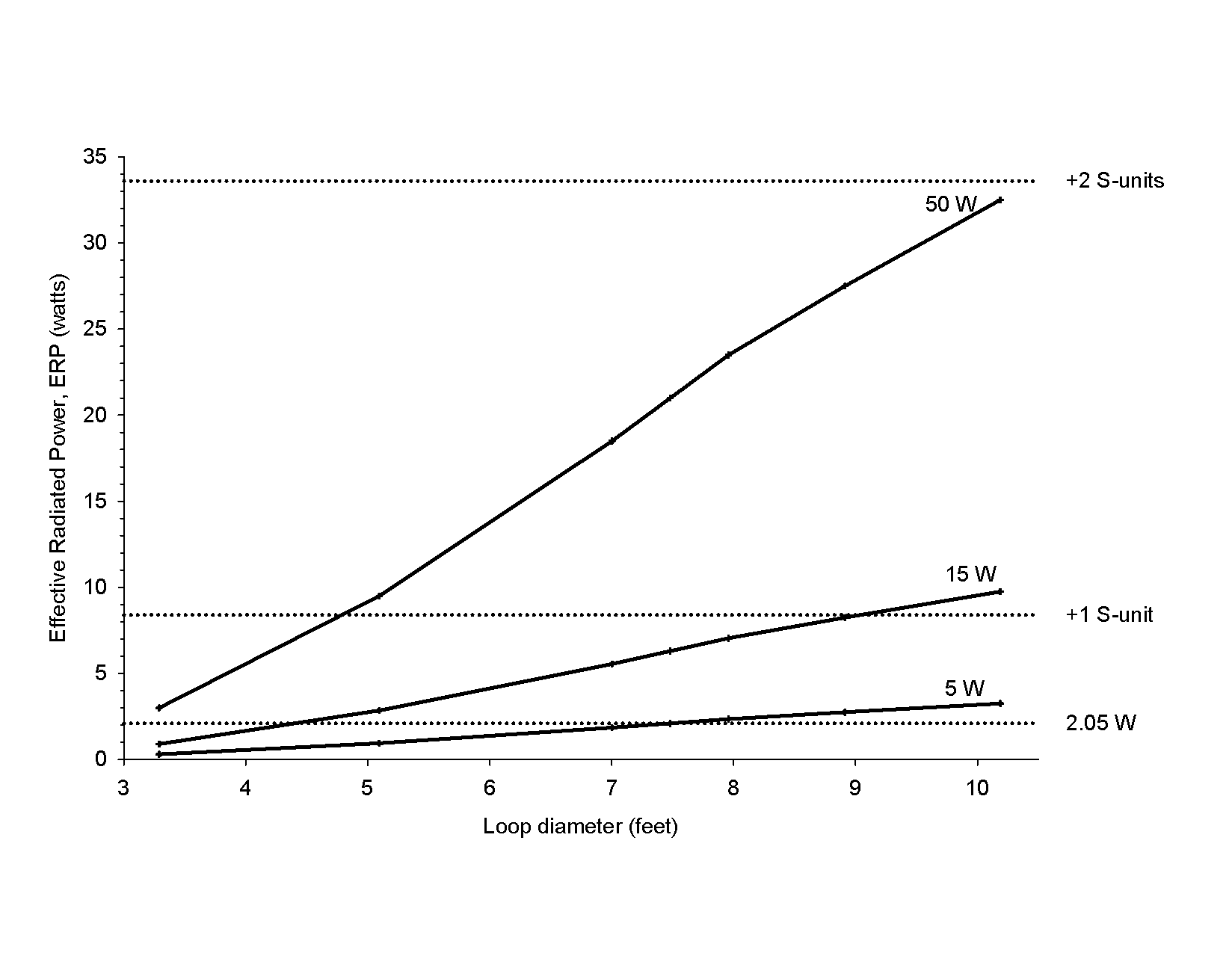Short loop antennas, especially for portable operation, are well described in magazine articles and on the Internet. Yet, most hams don't quite understand their limitations. If you want to be disappointed, operate a QRP rig on 40 meters with a 3 foot diameter loop. I did not understand this when I started, so I plotted some data to see for myself.

This what-if graph shows two very important features of 40 meter loop antennas. First, if you use a 3 foot loop with 5 W on 40 meters, your ERP is minuscule. I have marked a 2.05 W horizontal dotted line to indicate the minimum ERP I would tolerate for SSB operation. Note that with 5 W, you need a loop at least 7.5 feet in diameter for that ERP.
The second feature is power. Most portable 3 foot loop antennas are not designed to handle 50 to 100 W. With a loop that small you need a large capacitance. The capacitance must be variable and with 100 W the capacitor must safely handle 2 to 3 kV. A larger loop improves efficiency and reduces the capacitance. Still, the amount of power has a substantial effect.
A 5 foot diameter loop make with LMR-400 coaxial cable is a practical solution for a portable antenna. The next graph shows me the performance on multiple ham bands.

The solid lines show the performance with a 5 foot diameter loop. The dashed lines show the improved performance with a 7 foot loop, although that gets to be a cumbersome size. There are two things to notice. First, the curves take a bend at 20 meters. At 20 meters and above, these loops are pretty efficient. Below 20 meters, efficiency really drops. Second, power has a dramatic impact on ERP. Of, course, it should. On 40 meters, I can squeeze out 10 W ERP with a 50 W transmitter. but even nicer, I can get rather good performance on 30 and 20 meters if I can use 20 W or more.
These graphs address my first two goals. Why people running 5 to 15 W on 40 meters are often disappointed with loop antennas, and what I need to meet my own expectation of enjoying portable operation on 40, 30 and 20 meters.
 Andrew Mitz
Andrew Mitz
Discussions
Become a Hackaday.io Member
Create an account to leave a comment. Already have an account? Log In.